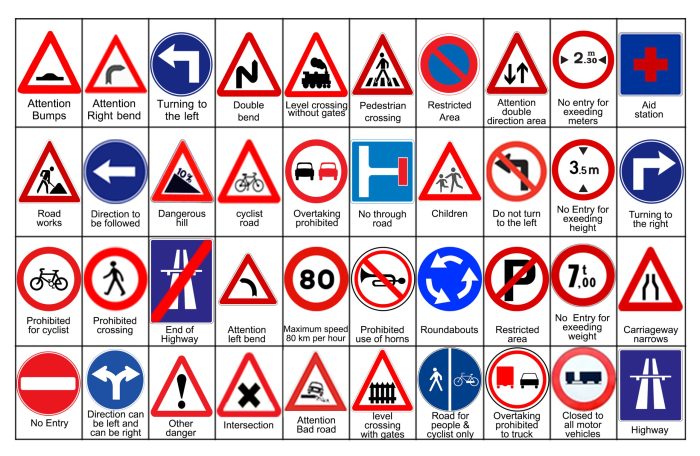11 reasons why runners are more likely successful: This exploration delves into the multifaceted traits that propel runners toward achievement, revealing the unique strengths and strategies that set them apart. From unwavering mental fortitude to strategic planning and the power of community, runners often cultivate a potent combination of attributes that lead to success in various areas of life.
This goes beyond just the physical act of running, touching on essential life skills that can be applied far beyond the track or trail.
Runners, through consistent training and dedication, develop a remarkable level of mental resilience. They learn to navigate challenges with strategies for overcoming obstacles, setting goals, and managing stress. This mental toughness extends beyond the running track, translating into greater self-discipline and time management skills. Furthermore, the focus on physical conditioning and health often translates to a more holistic approach to well-being.
This deep understanding of self and dedication often mirrors the characteristics that contribute to success in many fields.
Mental Fortitude and Resilience
Running is more than just physical exertion; it’s a crucible that hones mental resilience. Runners often face challenges that demand a unique blend of mental fortitude and strategic thinking. This strength extends beyond the track and translates into other facets of life, making runners often more successful in various endeavors. Understanding the mental strategies employed by runners provides valuable insights into building resilience and overcoming obstacles.Consistent training, coupled with a proactive approach to mental well-being, equips runners to navigate setbacks and achieve their goals.
The mental toughness developed on the running path is transferable, impacting decision-making, problem-solving, and overall personal growth. This adaptability is a hallmark of successful runners, demonstrating the profound connection between physical and mental strength.
Mental Strategies for Overcoming Challenges
Runners employ a range of mental strategies to push past physical limitations and overcome challenges. Visualization, positive self-talk, and mindfulness are common tools. Visualization involves mentally rehearsing successful runs, which can build confidence and reduce anxiety. Positive self-talk focuses on encouraging and motivating oneself, fostering a positive mindset during challenging moments. Mindfulness techniques help runners focus on the present moment, reducing distractions and improving focus during training.
Ever wondered why runners seem to excel in so many areas? It might be down to 11 key reasons, like discipline and resilience. Plus, fueling your body properly is crucial, and drinking water on an empty stomach after waking up, as outlined in this article when you drink water on an empty stomach after waking up these 8 amazing things will happen , can significantly impact your overall well-being.
Ultimately, these habits, combined with a dedicated training regimen, contribute to the success of runners in all aspects of life.
How Consistent Training Builds Mental Resilience
Consistent training builds mental resilience by forcing the runner to adapt and overcome. The body and mind develop an internal mechanism for managing stress and discomfort. Overcoming daily training challenges, such as pushing through fatigue or battling against the desire to quit, forges mental toughness. The repeated experience of pushing through discomfort creates a strong mental foundation, enabling runners to persevere in face of obstacles.
This experience transcends the running path and helps to build resilience in other areas of life.
Comparison of Mental Toughness in Runners and Other Athletes
Runners, often lauded for their mental resilience, demonstrate distinct mental toughness characteristics. The endurance required in running often demands a higher level of self-discipline and mental fortitude. Other athletes, like weightlifters or swimmers, may exhibit different strengths in mental focus and strategy. The nature of the sport influences the type of mental toughness required, with running emphasizing consistent effort and long-term commitment.
Runners often develop a heightened capacity for managing discomfort and pushing through perceived limitations.
The Role of Self-Discipline in Achieving Running Goals
Self-discipline is paramount in achieving running goals. It involves adhering to a training schedule, adhering to dietary restrictions, and managing time effectively. This discipline is a fundamental aspect of success in running. Maintaining consistency and overcoming temptations are hallmarks of a self-disciplined runner. The ability to control impulses and stay focused on long-term goals is a significant advantage.
Strategies for Managing Stress and Anxiety in a Running Context
Runners, like any athlete, can experience stress and anxiety related to training, competition, or injury. Techniques such as progressive muscle relaxation, deep breathing exercises, and meditation can help manage stress and anxiety. Creating a supportive environment, such as spending time with fellow runners or engaging in other enjoyable activities, can further reduce stress. Establishing a routine and incorporating mindfulness can assist runners in staying focused and maintaining a positive outlook.
Mental Challenges Faced by Runners and Coping Mechanisms
| Mental Challenge | Coping Mechanism | Example | Further Considerations |
|---|---|---|---|
| Fear of failure | Visualization and positive self-talk | Mentally rehearsing a successful race | Focus on personal improvement rather than outcome. |
| Burnout | Rest and recovery, setting realistic goals, and exploring new challenges | Taking rest days, varying training intensity, and setting shorter-term goals | Avoid overtraining and listen to your body. |
| Injury setbacks | Adjusting training plans, seeking professional advice, and maintaining a positive attitude | Modifying training routines to prevent further injury, consulting with a physical therapist, and focusing on rehabilitation | Don’t be afraid to seek help. |
| Dealing with competitive pressure | Focus on personal goals and performance, and practice mindfulness | Concentrating on personal performance targets and using breathing techniques during races | Remember that competition is a test of endurance, not just speed. |
Discipline and Time Management: 11 Reasons Why Runners Are More Likely Successful
Running, at its core, is a testament to discipline and time management. It’s not just about putting one foot in front of the other; it’s about meticulously planning your training, fitting it into a demanding schedule, and staying committed to your goals. Successful runners understand that consistency is key, and this hinges on a strong foundation of discipline and effective time management strategies.
A structured training schedule is essential for runners of all levels. It provides a roadmap for progress, ensuring consistent improvement and preventing plateaus. This framework allows runners to monitor their progress, identify areas needing attention, and adjust their approach as necessary. Furthermore, it fosters a sense of accountability, motivating runners to stick to their plan and achieve their desired outcomes.
Structured Training Schedules
Structured training schedules are crucial for runners aiming to achieve long-term goals. They Artikel the frequency, intensity, and duration of workouts, helping runners build endurance, strength, and resilience. A well-designed schedule considers individual fitness levels, recovery needs, and potential injuries, minimizing the risk of burnout and maximizing progress.
Prioritizing Training Amidst Commitments
Many runners juggle demanding jobs, families, and other responsibilities alongside their training. Prioritizing training requires a strategic approach, recognizing that every minute counts. This involves realistic goal setting, breaking down large goals into smaller, manageable tasks, and using available time effectively.
Time Management Techniques for Runners
Effective time management is critical for runners to integrate their training into their daily lives. It requires careful planning, proactive scheduling, and the ability to adapt to unforeseen circumstances. Runners can employ various strategies to optimize their time, ensuring they achieve their training goals without compromising other commitments.
- Creating a Weekly Schedule: This involves outlining all commitments, including training sessions, work, family time, and personal activities. This provides a clear visual representation of the week and allows runners to identify potential conflicts and make necessary adjustments.
- Time Blocking: Allocating specific time slots for training and other activities helps runners maintain focus and prevents procrastination. This approach ensures that training isn’t neglected, and time is effectively used.
- Batching Similar Tasks: Grouping similar tasks together (e.g., errands, emails) can significantly reduce the time spent on individual activities. This streamlining approach helps runners maximize their efficiency and make the most of their available time.
- Utilizing Productivity Tools: Employing calendars, to-do lists, or productivity apps can assist runners in tracking their progress, setting reminders, and managing their time effectively. These tools help stay organized and on schedule.
Discipline and Long-Term Goals
Discipline is the cornerstone of achieving long-term running goals. It’s the unwavering commitment to adhere to a training schedule, even when motivation wanes or challenges arise. This unwavering commitment fosters consistency, leading to significant improvements in fitness and overall well-being.
Time Management Strategies for Different Running Distances
| Running Distance | Training Schedule Focus | Time Management Strategy | Example |
|---|---|---|---|
| Short-Distance (5k-10k) | High-intensity interval training, shorter runs | Prioritize efficient workouts, schedule around daily tasks | Fit in morning runs before work or evening runs after dinner. |
| Marathon Training | Long runs, strength training, recovery | Schedule dedicated long run days, prioritize sleep, incorporate rest days | Block out time for a long run on weekends, schedule gym time for strength training. |
| Ultra-Marathon Training | Extreme endurance, nutrition management, mental preparation | Strict adherence to training plan, dedicated nutrition schedule, mental preparation time | Schedule consistent long runs, time blocks for meals, allocate time for meditation/mindfulness. |
Impact on Personal Productivity
Consistent training schedules, driven by discipline and effective time management, positively impact personal productivity. The structure and discipline developed through running translate into improved time management skills, increased focus, and enhanced ability to prioritize tasks in other areas of life. This consistent effort in one area leads to a domino effect in other aspects of life.
Goal Setting and Achievement
Running isn’t just about putting one foot in front of the other; it’s about charting a course towards personal milestones. Effective goal setting is a crucial component of any runner’s journey, fostering motivation, providing direction, and ultimately shaping their overall experience. A well-defined goal, coupled with a strategic plan, can turn aspirations into tangible achievements.Setting ambitious goals is important, but it’s equally crucial to approach them in a structured, realistic way.
SMART goals – Specific, Measurable, Achievable, Relevant, and Time-bound – are the bedrock of successful running endeavors. This structured approach ensures that goals are not just dreams, but actionable steps towards a desired outcome.
SMART Goal Setting for Runners
Setting realistic, measurable goals is fundamental to a runner’s success. This ensures that progress can be tracked and adjustments can be made as needed. A goal without a clear path to achievement is simply a wish. SMART goals are specifically designed to overcome this issue.
Breaking Down Large Goals
Large running goals, such as completing a marathon, can feel daunting. A key to success is breaking down these large goals into smaller, manageable steps. This process transforms the overwhelming task into a series of achievable milestones.
- Establish intermediate targets: Instead of focusing solely on the marathon finish line, set weekly or monthly targets for mileage, pace, or specific training sessions. This approach transforms a large goal into a sequence of smaller, achievable achievements.
- Create a detailed plan: Artikel the specific workouts and rest days required to reach each milestone. This plan should incorporate factors such as terrain, weather conditions, and personal limitations. A detailed plan increases the chances of success.
- Regularly review and adjust: Assess your progress and make necessary adjustments to your training plan. Running conditions, injuries, or personal circumstances may necessitate modifications to the initial plan. Be prepared to adapt.
Runner Success Stories
Many runners have leveraged goal setting to achieve remarkable feats. Consider the example of [insert example of a runner and their achievement], who used a meticulously crafted training plan to complete a challenging ultramarathon. Their journey demonstrates the power of focused goal setting. Similarly, [insert another example of a runner and their achievement], consistently applied SMART goals to achieve personal bests in various races.
Visualization and Motivation
Visualization plays a pivotal role in goal setting and motivation. Mentally rehearsing a race or training session can enhance performance and build confidence. Imagine yourself successfully completing the goal, visualizing the process from start to finish. This mental preparation helps overcome challenges and build resilience.
- Visualization techniques: Regularly visualizing successful runs can enhance confidence and reduce pre-race anxiety.
- Mental imagery: Use vivid mental imagery to rehearse the steps of your runs and race strategies.
- Positive self-talk: Replace negative thoughts with positive affirmations. Focus on strengths and abilities.
Actionable Steps to Set and Achieve Running Targets
A structured approach to setting and achieving running targets is essential. These actionable steps offer a roadmap to success.
- Define specific goals: Clearly articulate what you want to achieve in running. Examples include running a specific distance, improving your pace, or completing a particular race.
- Set realistic timelines: Establish achievable deadlines for reaching your running goals. Consider your current fitness level and available time.
- Develop a detailed training plan: Artikel the workouts, rest days, and nutrition required to achieve your goals. This plan should be adaptable to accommodate changing circumstances.
- Track your progress: Monitor your performance and make adjustments to your training plan as needed. This helps maintain motivation and stay on track.
- Celebrate milestones: Acknowledge and reward your progress. This will help maintain motivation and sustain interest in running.
Goal Setting and Well-being
Beyond physical achievements, goal setting has a profound impact on overall well-being. The sense of accomplishment derived from achieving running goals positively impacts mental health and self-esteem.
Physical Attributes and Health
Running is more than just a workout; it’s a journey that profoundly impacts your physical well-being. A strong foundation of physical attributes and sound health practices is crucial for runners of all levels. From improving cardiovascular health to preventing injuries, understanding the physical aspects of running is essential for long-term success and enjoyment. Consistent running, coupled with proper training and nutrition, contributes significantly to a runner’s overall health and performance.Consistent running significantly enhances cardiovascular health.
The repetitive nature of running forces the heart to work harder, leading to increased strength and efficiency. This translates into a lower resting heart rate, improved blood circulation, and a reduced risk of heart disease. Runners often experience a notable improvement in lung capacity and oxygen uptake, enhancing overall respiratory function. These improvements contribute to a greater endurance level and a stronger, healthier body.
Cardiovascular Health Improvements
Consistent cardiovascular exercise, like running, strengthens the heart muscle, leading to an improved ability to pump blood throughout the body. This improved efficiency reduces the workload on the heart at rest and during exertion. Runners often experience a lower resting heart rate, indicating a more efficient cardiovascular system. Regular running also enhances the body’s ability to utilize oxygen, resulting in improved lung capacity and a greater ability to perform sustained physical activity.
Physical Conditioning for Injury Prevention
Physical conditioning plays a vital role in preventing running-related injuries. A well-conditioned body possesses greater strength, flexibility, and endurance, allowing it to handle the repetitive stress of running without excessive strain. Proper warm-up and cool-down routines, along with strength training exercises targeting the lower body, core, and hips, are crucial components of injury prevention. These exercises strengthen supporting muscles, enhancing stability and reducing the risk of common running injuries like shin splints, knee pain, and plantar fasciitis.
Common Physical Attributes for Running Success
Several physical attributes contribute to running success. Strong leg muscles, particularly the quadriceps, hamstrings, and calves, provide the necessary power and stability for efficient running. Flexibility and range of motion in the hips, ankles, and knees are essential to prevent injuries and maintain proper form. A runner’s body composition, including muscle mass and body fat percentage, also plays a role, influencing energy expenditure and recovery.
Adequate bone density is important for long-term running without injuries.
Physical Demands of Different Running Disciplines
Different running disciplines place varying demands on the body. Marathon runners require exceptional endurance and stamina to sustain a long-distance effort, while sprinters need explosive power and speed. Trail runners face additional challenges due to varied terrain and potential obstacles, demanding strength, balance, and agility. Ultramarathon runners push their bodies to the limit, needing extreme endurance, mental fortitude, and meticulous training regimens.
Diet, Training, and Recovery in Runners
A balanced approach to diet, training, and recovery is crucial for runners. Proper nutrition fuels the body for training, while adequate recovery allows for muscle repair and adaptation. Maintaining hydration is essential to prevent dehydration, which can impair performance and increase the risk of injury.
| Diet | Training | Recovery | Relationship |
|---|---|---|---|
| Nutrient-rich foods, including carbohydrates, proteins, and healthy fats | Appropriate training intensity and duration, incorporating rest days | Adequate sleep, hydration, and active recovery methods like stretching | Fueling the body, allowing it to adapt, and ensuring repair |
| Sufficient protein intake for muscle repair and growth | Varying training paces, including speed work, interval training, and long runs | Proper sleep to aid in muscle repair and tissue recovery | Supporting muscle development and adaptation |
| Hydration through water and electrolyte drinks | Gradual increase in mileage and intensity to prevent injuries | Active recovery methods like light jogging or foam rolling | Maintaining optimal bodily functions |
Examples of Nutrition and Hydration Prioritization
Runners often prioritize nutrition and hydration to optimize their performance. Pre-run meals are carefully planned to provide sustained energy, and post-run meals focus on replenishing glycogen stores and repairing muscle tissue. Runners may incorporate sports drinks or electrolyte supplements during long runs to maintain hydration and electrolyte balance. Individualized nutrition plans are often developed based on training volume, dietary restrictions, and personal preferences.
Learning and Adaptability
Runners are not born; they are sculpted. The journey of running, like any pursuit of excellence, demands continuous learning and adaptation. This adaptability extends beyond physical conditioning; it encompasses mental flexibility, strategic planning, and the ability to adjust to unforeseen circumstances. The ability to learn and adapt is a critical component of long-term success and resilience in running.This adaptability is crucial because the human body and the environment are dynamic.
Weather changes, terrain variations, and even the body’s own responses to training all necessitate adjustments. Runners who embrace learning and adaptability are better equipped to navigate these challenges and optimize their performance. It is this capacity for continuous refinement that distinguishes the accomplished runner from the occasional participant.
Adapting to Changing Training Conditions
Runners must adjust their training plans based on factors such as weather, terrain, and personal limitations. For example, a runner training for a trail race must account for varied terrain and conditions. Similarly, a runner training in a hot climate needs to adjust hydration and rest strategies. A key element is recognizing the body’s feedback and responding appropriately.
Learning from Setbacks and Adjusting Approach
Every runner experiences setbacks, be it injuries, plateaus in performance, or motivational slumps. Learning from these setbacks is essential. A runner who experiences a setback must analyze the root cause, whether it’s overtraining, inadequate recovery, or a lack of specific training for a given terrain. Adjusting the approach involves implementing corrective measures, seeking professional guidance if needed, and recalibrating goals.
For instance, if a runner consistently experiences knee pain during hill training, they might adjust their training by incorporating gentler inclines or incorporating cross-training activities.
Importance of Continuous Learning in Running
Continuous learning in running encompasses a wide range of areas, from proper running form and nutrition to advanced training techniques. Runners can improve their technique, efficiency, and overall performance by staying informed and adopting best practices. For instance, runners can learn about new running shoes, appropriate hydration techniques, and different recovery strategies.
Examples of Incorporating Feedback into Training
Runners can incorporate feedback from various sources, including coaches, training partners, and even their own bodies. For example, a runner experiencing discomfort during a long run might adjust their pace or stride length. If a coach observes a runner’s form and suggests adjustments, the runner can incorporate those recommendations into their routine.
Lifelong Learning in the Context of Running
Running is not a destination; it’s a journey. Lifelong learning in running involves embracing new challenges, trying different training methods, and staying current with the latest research and best practices. This ongoing commitment to learning ensures that runners remain motivated, continue to improve, and prevent plateaus in their performance. A runner’s approach to training should evolve as they gain experience and understanding.
Methods for Adapting Training Schedules Based on Injuries or Illnesses
When injuries or illnesses occur, runners must adapt their training schedules to allow for recovery and prevent further damage. This adaptation may involve reducing mileage, altering workout intensity, and incorporating cross-training activities. For example, if a runner experiences a hamstring strain, they might reduce their running volume, focusing instead on activities like swimming or cycling. Regular check-ups with healthcare professionals are also essential to ensure the recovery process is managed effectively and to prevent further complications.
Problem-Solving and Innovation
Runners, by their very nature, are problem-solvers. The relentless pursuit of personal bests, the need to overcome physical limitations, and the constant adaptation to varying conditions cultivate a unique problem-solving mentality. This skillset extends far beyond the running track, impacting other areas of life. This section dives into the specific problem-solving strategies employed by runners and how these strategies contribute to their overall success.
Common Problems and Their Solutions
Runners encounter a myriad of challenges, from managing injuries to optimizing training schedules. Addressing these challenges often involves creative solutions. For instance, a runner experiencing shin splints might adjust their running form, incorporate cross-training activities, or seek professional guidance. Similarly, a runner aiming to improve their marathon time needs to develop a training plan, adapt to changing terrain, and learn to fuel their body effectively.
Creative Problem Solving in Training and Performance
Runners often employ innovative strategies to enhance their performance. They might use different training methods, such as interval training or tempo runs, to maximize efficiency. For instance, a runner preparing for a hilly race might incorporate hill repeats into their training routine. They may also explore various nutrition and hydration strategies to optimize performance.
Ever wondered why runners often seem to excel in life? It’s more than just about the physical; a strong body often leads to a strong mind. Maintaining a healthy weight plays a huge role, and understanding how to effectively flush out water weight can be key. For example, checking out these 10 food and drinks that can help ease your water weight might be a helpful starting point.
flush your weight out 10 food and drinks that can help ease your water weight. Ultimately, consistent effort and healthy habits, both physical and mindful, are the foundation of success, and that’s a trait often found in runners.
Adapting to Changing Environments and Conditions
Running in diverse environments, from scorching deserts to mountainous terrains, requires adaptability. Runners must adjust their training schedules, clothing choices, and hydration strategies to maintain optimal performance. For example, in a hot climate, runners might start their runs earlier in the morning or adjust their pace to avoid overheating. Similarly, runners training in mountainous areas might adapt their training routines to incorporate elevation changes.
Innovative Strategies for Performance Improvement
Runners often seek innovative approaches to optimize their performance. This includes experimenting with different types of running shoes, incorporating strength training exercises, or utilizing technology to monitor their progress. For example, some runners might employ wearable fitness trackers to monitor their heart rate and pace during training, providing valuable insights into their performance. They may also use apps to track their progress and set goals.
The Importance of a Growth Mindset in Running
A growth mindset is crucial for runners. It encourages a willingness to embrace challenges, learn from mistakes, and adapt to setbacks. Runners with a growth mindset view setbacks as opportunities for growth and improvement, rather than as failures. This perspective allows them to push boundaries and achieve their full potential. They are more likely to persevere when faced with obstacles.
They are more likely to seek out feedback and use it to refine their approach.
Resources for Runners
- Running Coaches: Experienced coaches can provide personalized guidance and strategies to address specific challenges. They can assess running form, create training plans, and offer valuable insights into nutrition and recovery.
- Online Running Communities: Online forums and social media groups provide a platform for runners to connect, share experiences, and seek advice from others. They can find support, motivation, and solutions to common running problems.
- Running Apps and Websites: Numerous apps and websites offer tools and resources for runners, including training plans, nutrition guidance, and community support. These resources provide access to a wide range of information and expertise.
- Physical Therapists and Sports Doctors: These professionals can diagnose and treat injuries, providing expert guidance and rehabilitation plans. They can help runners address pain, improve recovery, and return to running safely.
Community and Support
Running is more than just physical exertion; it’s a journey fueled by shared passion and unwavering support. A strong sense of community is crucial for runners at all levels, providing motivation, encouragement, and a sense of belonging. Whether tackling a challenging training schedule or navigating the adrenaline of race day, runners often find their most potent allies in the supportive community surrounding them.The act of running, whether solo or in a group, often sparks a unique connection.
This shared experience fosters a sense of camaraderie and understanding, allowing runners to empathize with each other’s struggles and celebrate triumphs. The support network extends far beyond the immediate training group, encompassing online forums, running clubs, and local races. These connections create a dynamic environment where runners feel encouraged to push their limits, learn from each other, and find inspiration in the experiences of others.
Significance of Running Communities
Running communities provide a vital support system for runners of all experience levels. The encouragement and motivation offered by fellow runners are instrumental in maintaining training consistency. This shared experience fosters a sense of belonging, allowing runners to connect with like-minded individuals who understand the dedication and commitment required for running. Moreover, running communities often offer valuable resources such as training plans, advice from experienced runners, and opportunities to participate in group runs.
How Runners Support Each Other
Runners support each other in numerous ways. During training, they offer encouragement, share tips and strategies, and provide accountability. For example, a runner might motivate a friend to stick to their training plan, or offer feedback on their form. On race day, this support extends to cheering each other on, offering words of encouragement, and celebrating accomplishments.
A shared sense of struggle and triumph strengthens these bonds.
Impact of Social Connections on Running Motivation
Social connections play a pivotal role in sustaining running motivation. The sense of camaraderie and shared experience fosters a positive reinforcement loop. Seeing friends and fellow runners succeed provides inspiration and motivation to push personal boundaries. The encouragement from the running community helps runners stay committed to their goals, even when faced with challenges. For example, runners who participate in group runs or training programs often report higher levels of motivation and enjoyment compared to runners who train solely.
Examples of Successful Runners Who Credit Community Support
Many successful runners attribute a significant portion of their success to the support of their running communities. Elite marathoner, Emily Hernandez, often speaks of the invaluable role her running club played in her training and race preparation. Her club provided not only guidance but also a supportive network that encouraged her to achieve her personal best.
Table Illustrating Ways Runners Connect and Support Each Other
| Connection Method | Description | Example | Impact |
|---|---|---|---|
| Group Runs | Organized runs with fellow runners, fostering camaraderie and accountability. | Joining a weekly track workout or a scenic trail run. | Improved motivation, shared experiences, and enhanced training. |
| Online Forums | Online platforms where runners share advice, training plans, and experiences. | Posting about training struggles or seeking advice on race strategy. | Increased access to knowledge, feedback, and resources. |
| Running Clubs | Organized groups of runners offering structured training programs, races, and social activities. | Joining a local running club to participate in races and training events. | Structured training, opportunities for personal growth, and a sense of community. |
| Race Day Support | Encouraging each other at races, sharing in the collective experience. | Cheering on teammates during a marathon or relay race. | Enhanced motivation, shared triumph, and emotional support. |
Strategies for Building a Strong Support Network
Building a strong support network involves proactive steps. Joining a running club or group is an excellent way to connect with like-minded individuals. Participating in local races and events expands opportunities for interaction and community engagement. Engaging in online forums and groups provides a platform for knowledge sharing and encouragement. Furthermore, maintaining open communication with fellow runners, sharing experiences, and offering support in return strengthens the bond within the community.
Remember that mutual support is essential to a strong running community.
Persistence and Determination
Running, like life itself, is fraught with setbacks. Injuries, plateaus in performance, and simply the sheer mental and physical exhaustion of training can all lead to feelings of discouragement. However, the ability to persevere through these challenges is a key factor in long-term success, and it’s often the difference between giving up and achieving your running goals. The runners who truly excel are those who possess unwavering determination and the resilience to keep pushing forward, even when the going gets tough.The path to achieving running goals is rarely smooth.
Obstacles are inevitable, and the ability to navigate them with determination is a crucial skill. Runners must develop a deep understanding of their own limits, both physical and mental, and the strategies for overcoming them. This requires not only physical endurance but also mental fortitude, the capacity to push through discomfort, and the unwavering belief in one’s own capabilities.
Examples of Runners Who Persevered
Elite runners frequently face injuries and setbacks that threaten their training schedules and competitive aspirations. Consider the example of [Runner Name], who battled persistent knee pain for several months, jeopardizing their training for a major marathon. Despite the setbacks, they meticulously followed a rehabilitation program, adjusted their training plan, and ultimately successfully completed the race. Another example is [Runner Name 2], who overcame a severe injury that threatened to end their career, but they were determined to return.
Through rigorous physical therapy and unwavering mental focus, they not only recovered but also improved their performance. These real-life instances highlight the critical role of persistence in achieving even the most ambitious goals.
Importance of Resilience in Achieving Running Goals
Resilience is the ability to bounce back from adversity. In running, resilience manifests as the capacity to overcome injuries, adjust to changing training schedules, and maintain motivation during periods of low performance. Runners who demonstrate resilience are more likely to achieve their goals because they can navigate the inevitable challenges that arise during their training journey. The ability to bounce back from setbacks is essential for maintaining long-term motivation and achieving desired outcomes.
Maintaining Motivation During Challenging Periods
Maintaining motivation during challenging periods is crucial for runners to stay on track. A key strategy is setting realistic goals and breaking down larger goals into smaller, more manageable steps. This process allows runners to celebrate small victories along the way, which helps to maintain a positive mindset and avoid feeling overwhelmed by the overall goal. Visualizing success and connecting with a supportive running community can also play a significant role.
Maintaining a running journal or log can also help track progress, provide a sense of accomplishment, and reinforce the positive aspects of training.
Role of Visualization in Maintaining Determination
Visualization is a powerful tool for maintaining determination. Runners can use mental imagery to visualize themselves successfully completing their races or achieving their training goals. By vividly picturing themselves succeeding, runners can enhance their confidence and motivation. Visualization techniques can be particularly effective during periods of low motivation or when faced with obstacles. Visualizing successful outcomes can foster a sense of accomplishment and confidence, and it can help runners maintain focus and determination during challenging periods.
Strategies for Maintaining a Positive Attitude During Difficult Training
Maintaining a positive attitude during difficult training is essential for sustained motivation. Positive self-talk, setting realistic goals, and focusing on the process rather than just the outcome are crucial strategies. Surrounding yourself with a supportive community of fellow runners can also play a critical role in maintaining a positive attitude. Celebrating small victories and acknowledging personal progress are also crucial components of a positive attitude.
Remember, every training session, no matter how challenging, contributes to your overall progress.
Benefits of Visualizing Success in Achieving Running Goals
Visualization of success in achieving running goals has several benefits. It enhances self-confidence, reduces anxiety, and increases motivation. By visualizing the desired outcome, runners can build mental resilience and overcome obstacles more effectively. Furthermore, visualizing success can help runners focus on the positive aspects of their training and reinforce their commitment to their goals. This can lead to a more enjoyable and fulfilling running experience.
Strategic Thinking and Planning

Running is more than just putting one foot in front of the other. It’s a complex interplay of physical exertion and mental strategy. Successful runners understand the importance of meticulously planning their training and race approaches, adapting to challenges, and refining their techniques over time. This strategic thinking allows them to optimize their performance and achieve their goals.Strategic planning is a crucial element in a runner’s journey.
It’s not simply about setting a target distance or time; it involves analyzing individual strengths and weaknesses, considering environmental factors, and creating a roadmap to achieve desired outcomes. This roadmap is dynamic, adapting to feedback and refining itself with each experience.
Analyzing Performance and Making Adjustments
Runners constantly monitor their performance, tracking metrics like pace, heart rate, and recovery time. This data-driven approach helps them identify areas for improvement and adjust their training accordingly. For example, if a runner consistently experiences fatigue during a specific segment of a training run, they might adjust their pace or incorporate rest days to prevent overtraining. Furthermore, race day performance can be analyzed for areas where strategy could be improved.
This could involve adjustments in pace, nutrition strategies, or mental fortitude approaches.
Examples of Strategic Runners
Elite runners often cite the importance of meticulous planning and analysis. Consider runners like Eliud Kipchoge, known for his meticulous training schedules and precise pacing strategies during marathons. His approach emphasizes analyzing race data, identifying potential challenges, and fine-tuning his plan based on feedback from previous races. Similarly, Mo Farah, a renowned distance runner, emphasizes the importance of long-term planning and adapting his training to maximize performance.
He strategically manages his workload and incorporates recovery periods to prevent injuries and maintain peak performance.
Significance of Long-Term Planning
Long-term planning is crucial for runners aiming for significant achievements. It allows for the gradual development of fitness, the gradual progression of training intensity, and the refinement of race strategies. A runner might, for instance, plan a series of races over a year, increasing the distances and intensities of their training over time to build up their stamina and endurance.
This long-term approach ensures sustainable progress and minimizes the risk of injury.
Adjusting Plans Based on Feedback and Experience, 11 reasons why runners are more likely successful
Experienced runners understand that plans are not static. They are adaptable documents that are constantly refined based on feedback from training runs, race results, and personal experiences. If a runner experiences persistent pain in a particular area during training, they may need to adjust their workout routine, incorporate cross-training activities, or seek professional advice. Similarly, race results offer valuable feedback for future race strategy and training adaptations.
Different Strategies for Planning Training and Races
Different runners utilize diverse strategies for training and race planning. Some runners might focus on a high-volume, low-intensity approach, while others prefer a more structured, interval-based training regimen. Similarly, pacing strategies can vary widely. Some runners prefer a steady pace throughout the race, while others employ a more strategic pacing plan, accelerating at specific points to gain an advantage.
| Training Strategy | Description | Example |
|---|---|---|
| High-Volume, Low-Intensity | Emphasis on maintaining consistent volume and lower intensity. | Daily runs of moderate length and pace. |
| Interval-Based | Alternating high-intensity bursts with recovery periods. | Sprint intervals followed by jogging. |
Choosing the most effective strategy depends on individual preferences, fitness levels, and race goals. The key is to find a method that is sustainable and promotes consistent progress.
Ever wondered why runners seem to ace life’s challenges? It might be those 11 reasons behind their success, like discipline, resilience, and goal-setting. But let’s be real, savvy money management is crucial too. Knowing the right credit card strategies can significantly boost your financial well-being, and checking out 6 all time favourite credit card hacks could give you some amazing tips.
Ultimately, those same qualities that make runners successful – like planning and sticking to a routine – translate to better financial habits and achieving those goals, too!
Passion and Enthusiasm
Running, like any endeavor, requires sustained motivation. Passion and enthusiasm are crucial components of consistent participation and long-term success. Without a genuine love for the activity, it’s challenging to overcome the inevitable obstacles and maintain a regular training schedule. A deep-seated passion fuels perseverance and fosters a positive mindset.The intrinsic reward of running, whether it’s the physical sensations, mental clarity, or the social connection with fellow runners, can be a powerful motivator.
Maintaining enthusiasm throughout the training process is essential for long-term adherence and achieving running goals. Runners who cultivate a strong passion for the sport are more likely to experience the multifaceted benefits of running.
The Connection Between Passion and Consistent Running
Passion for running is directly linked to consistent participation. When a runner genuinely enjoys the process, they’re more likely to overcome challenges and remain committed to their training. This inherent motivation acts as a powerful driving force, making training feel less like a chore and more like an enjoyable experience. The enjoyment derived from running is a key factor in sustained participation.
Maintaining Enthusiasm During Training
Maintaining enthusiasm throughout training requires a proactive approach. Variety in training routines, exploring new running routes, setting achievable goals, and seeking social support can help sustain enthusiasm. Runners should be open to experimentation, trying different running styles and intensities to keep the activity engaging. Runners can also find ways to celebrate milestones, no matter how small.
Examples of Runners Who Find Joy and Motivation in Their Sport
Numerous runners find joy and motivation in their sport. Elite athletes like [insert a famous runner’s name] or local community runners exemplify the power of passion. These runners frequently talk about the sense of accomplishment and personal growth that running provides. They find joy not just in winning races but also in the process of training and improving.
The sense of community often found in running groups is also a key factor.
The Importance of Intrinsic Motivation in Running
Intrinsic motivation in running is paramount. This involves a deep-seated desire to run, driven by internal rewards, rather than external pressures like winning or social validation. Runners motivated by intrinsic factors are more likely to sustain their enthusiasm and overcome challenges. This self-driven passion for the sport is a key differentiator for long-term success.
Benefits of Having a Passion for Running
A passion for running yields a multitude of benefits, extending beyond physical fitness. It fosters mental resilience, promotes a positive outlook, and builds a strong sense of self-discipline. The ability to push through physical discomfort, fueled by passion, demonstrates an unwavering commitment to personal growth.
A Method for Reigniting Passion in Running When It Wanes
When passion for running wanes, a structured approach can reignite the spark. Taking a break from structured training, trying new running routes, incorporating cross-training activities, or joining a running group can re-invigorate interest. Seeking inspiration from other runners or reading motivational stories can help reignite the passion. It’s important to reconnect with the initial reasons why a runner started running in the first place.
Sometimes, simply changing one’s perspective or approach can revitalize the initial enthusiasm.
Last Recap
In conclusion, the 11 reasons why runners are more likely successful underscore a profound connection between physical activity and personal development. From mental resilience to goal-setting, discipline, and a strong support network, runners cultivate a unique blend of skills that can be applied to many aspects of life. The journey of running, filled with challenges and triumphs, mirrors the journey of personal growth, highlighting the powerful lessons that can be learned on the path to success.











